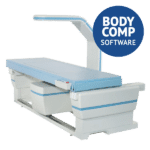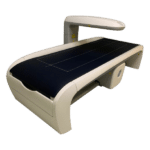Bone density tests are most often advised for women over 50 in order to detect signs of osteoporosis or osteopenia
A bone densitometer is a machine that uses X-Rays to measure the density of bone. The bone density test, or dual energy X-Ray absorptiometry (DXA or DEXA scan,) accurately measures how much calcium and minerals are in the bone. The more minerals the patients have in their bones, the less likely they are to break.
Bone density tests are most often advised for women over 50 in order to detect signs of osteoporosis or osteopenia, but they can be administered to anyone. A bone density test may be recommended to any man or woman that has broken a bone after 50, has lost more than 1.5 inches of their height, is having back pain without any cause, has received an organ transplant, or had a drop in hormone levels, in addition to other factors that can be discussed with a doctor.
There are two types of bone density tests, the Central DXA, and the Peripheral test. The Central DXA will look at the spine and hip bones, which tend to be more at risk for breakage, and tends to be more accurate that a Peripheral test. After the patient lies down on a padded table, the bone densitometer arm passes above them and sends low dose X-Rays through their body. The test lasts around 10 minutes.
Get Started
Request Pricing Today!
We’re here to help! Simply fill out the form to tell us a bit about your project. We’ll contact you to set up a conversation so we can discuss how we can best meet your needs. Thank you for considering us!
Great support & services
Save time and energy
Peace of mind
Risk reduction
The Peripheral test will measure bone density at the wrist, finger, and heel, and though it is less accurate than Central DXA, it is cheaper and portable, which makes it easier for more at-risk people to get screened.
When a patient receives their results, they will get a T score, which compares the bone density of the patient with that of a healthy young adult of their gender. The T score will indicate whether bone density is normal or the patient has osteoporosis. For example, -1 and above means bone density is normal, -1 to -2.5 means bone density is low and may lead to osteoporosis in the future, and a score of -2.5 and above indicates the patient has developed osteoporosis.
The patient will also receive a Z score, which allows them to compare how much bone mass they have in comparison with other people of the same age, gender, and size. A Z score below -2.0 means that they have less bone mass than average for their age and it could be caused by something other than aging.
Patients that are taking medication for osteoporosis should receive a bone density test every year or two years, and sometimes a doctor may even suggest a bone density test every two years to patients without osteoporosis, especially for women during or after menopause.


